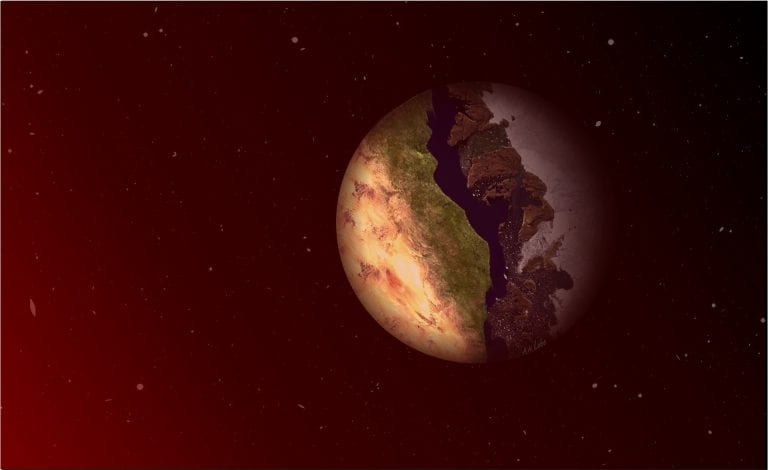Researchers at the University of California have published a new study describing how extraterrestrial life could exist in the so-called distant exoplanet end belt, the region that separates the night and day parts of the celestial body.
“The planets involved have a permanent day side and a permanent night side.” – said Anna Lobo (UCI), published in The Astrophysical Journal Stady Lead author. He also added that such planets are very common because they orbit stars that make up 70% of the visible stars in the sky – the so-called M dwarfs, which are fainter than the Sun.

The terminator is the dividing line that runs between the day and night sides of a celestial body. In this range it is conceivable that the temperature is just right, neither too high nor too low.
“We need an ideal planet with the right temperature to keep water in a liquid state.” Lobo said. According to our current knowledge, liquid water is a prerequisite for life. On the dark side of these planets, eternal night results in temperatures so low that water freezes into ice. However, on the side facing the star, the temperature is too high for water to remain liquid at the surface.
“This is a planet where the day side could be hot and completely uninhabitable, and the night side tepid, possibly covered in ice. On the dark side, there could also be large glaciers.” said the researcher.
Anna Lobo and colleague Ohmawa Shields modeled the climate of these planets using software used to model Earth’s climate — with a few minor changes, such as reducing the speed of the planet’s rotation.
They believe they have proven for the first time that these planets can have a habitable climate in the separating belt. Previously, researchers had studied ocean-covered exoplanets for the potential for life. But now that it has been discovered that the dividing belt can be a haven for life, we have more chances to find planets suitable for life.
“We’re trying to bring attention to waterless planets that, while not having vast oceans, may have lakes or other smaller areas of liquid water, which is actually very promising.” Lobo said.
According to the researcher, one of the keys to the discovery was determining what properties the end zone could have to sustain liquid water. If the planet is mostly covered in water, the mass of water facing the star is likely to evaporate and a thick layer of vapor will surround the entire planet. But if there is enough land, this phenomenon does not happen.
“Anna has shown that if there is a lot of land on the planet, what we call ‘terminator habitability’ is a much easier scenario.” Shields said. “The new, exotic habitable conditions that our team discovered are no longer the stuff of science fiction — Anna has demonstrated that certain climatic features can be stable.”
Realizing that life can persist in these ranges also means that astronomers have to develop new ways to search for life, because signs of life forms may only be detectable in certain parts of the planet’s atmosphere.
The new discoveries should help astronomers search for habitable planets with instruments such as NASA’s James Webb Space Telescope and Ultrasound Infrared Survey Instrument (LUVOIR), which is currently in development.
“Investigating these strange climatic features will help identify habitable planets in the future.” Lobo said.
Source: UCI News
comment






